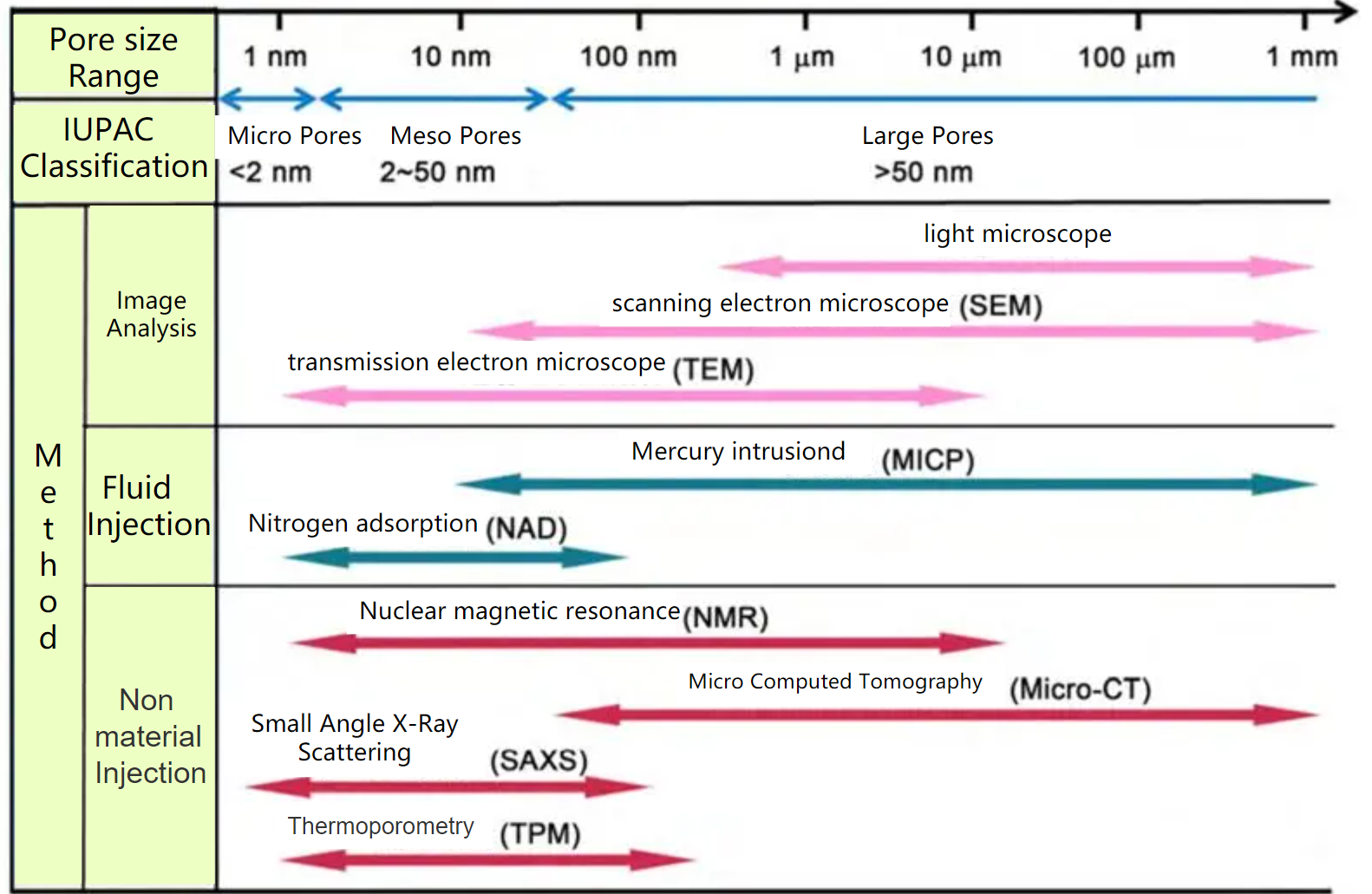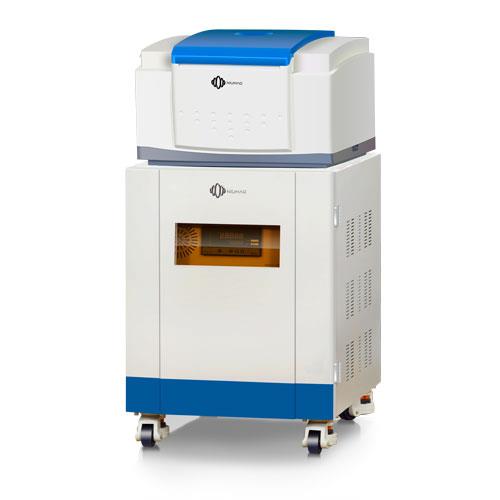Pore Size Distribution NMR Analyzer
The pore sizes distribution is an important characteristic of materials, especially in fields such as materials science, chemistry, and geology. It can significantly affect the properties and behavior of the material, including its permeability, surface area, adsorption capacity, and mechanical strength.
Pore Size Distribution Measuring Methods
There are several methods and techniques used to determine pore size distribution. Some of the commonly used techniques include:
- Mercury Intrusion Porosimetry: This method involves immersing a sample in a mercury bath and applying increasing pressure to force the mercury into the pores. By measuring the volume of mercury intruded at different pressures, the pore size distribution can be determined.
- Gas Adsorption: Gas adsorption techniques, such as nitrogen adsorption using the Brunauer-Emmett-Teller (BET) method, can provide information about the specific surface area and pore size distribution of porous materials. The adsorption isotherms obtained at different relative pressures can be analyzed using various models, such as the Barrett-Joyner-Halenda (BJH) method or the density functional theory (DFT), to determine the pore size distribution.
- Capillary Flow Porometry: This technique involves applying a wetting liquid to a sample and measuring the flow rate through the material. The capillary flow porometry method can provide information about the pore size distribution and pore connectivity.
- Electron Microscopy: Scanning electron microscopy (SEM) or transmission electron microscopy (TEM) can be used to examine the surface and internal structure of materials at high magnification. These techniques can provide qualitative information about pore sizes distributions.
Pore Size Distribution Measuring by NMR
In NMR, a sample is subjected to a strong magnetic field, which causes the nuclei of certain atoms within the sample to align with or against the magnetic field. A radio frequency (RF) pulse is then applied to the sample, which causes the nuclei to absorb energy and become excited. When the RF pulse is turned off, the nuclei return to their original state, releasing the absorbed energy as electromagnetic radiation. This radiation is detected by an antenna, and the resulting NMR spectrum provides information about the chemical and physical properties of the sample.
In the case of rock core pore size distribution analysis, NMR can be used to study the properties of the minerals and fluids within the rock sample. The NMR spectrum provides information about the number of hydrogen atoms in the sample, their chemical environment, and the amount of fluid present in the sample. This information can be used to determine the porosity, permeability, and fluid content of the rock, as well as the composition and structure of the minerals present.
Pore Size Distribution Measuring by NMR Advantages
Nuclear magnetic resonance (NMR) instrument has several advantages as a technique for studying the properties of molecules and materials:
Non-destructive: NMR is a non-destructive technique that allows for the analysis of samples without altering their chemical or physical properties.
Versatile: NMR can be used to study a wide range of materials, including organic compounds, inorganic compounds, polymers, proteins, and even intact cells.
Quantitative: NMR can provide quantitative information about the concentration and distribution of different components within a sample.
Structural information: NMR can provide detailed structural information about molecules, including their three-dimensional shapes, interatomic distances, and chemical environments.
High resolution: NMR has high resolution and can distinguish between different chemical groups within a sample, even in complex mixtures.
No radiation exposure: Unlike other analytical techniques such as X-ray crystallography, NMR does not involve exposure to ionizing radiation, making it safer for both the user and the sample.
Minimal sample preparation: NMR requires minimal sample preparation, often only requiring the sample to be dissolved in a suitable solvent.
Pore Size Distribution NMR of Niumag
Pore size distribution NMR refers to a series of NMR instruments manufactured by Niumag Corporation.
Niumag NMR instruments use a low-field, permanent magnet design that allows for high sensitivity and resolution while maintaining a compact size and affordable cost. These instruments offer a variety of features, including automated shimming, temperature control, and a user-friendly interface for data analysis and processing.
The Niumag NMR instruments can be used for a variety of applications, such as quality control, research and development, and process monitoring. They are particularly useful for analyzing the composition, structure, and properties of materials, including polymers, chemicals, food products, pharmaceuticals, and geological samples.
The Niumag NMR instruments are available in several models with different field strengths and sample sizes, ranging from 0.5 Tesla to 2.0 Tesla. These instruments are widely used in academia, research laboratories, and industrial settings for a variety of applications in materials science, chemistry, geology, and other fields.
 NIUMAG
NIUMAG

